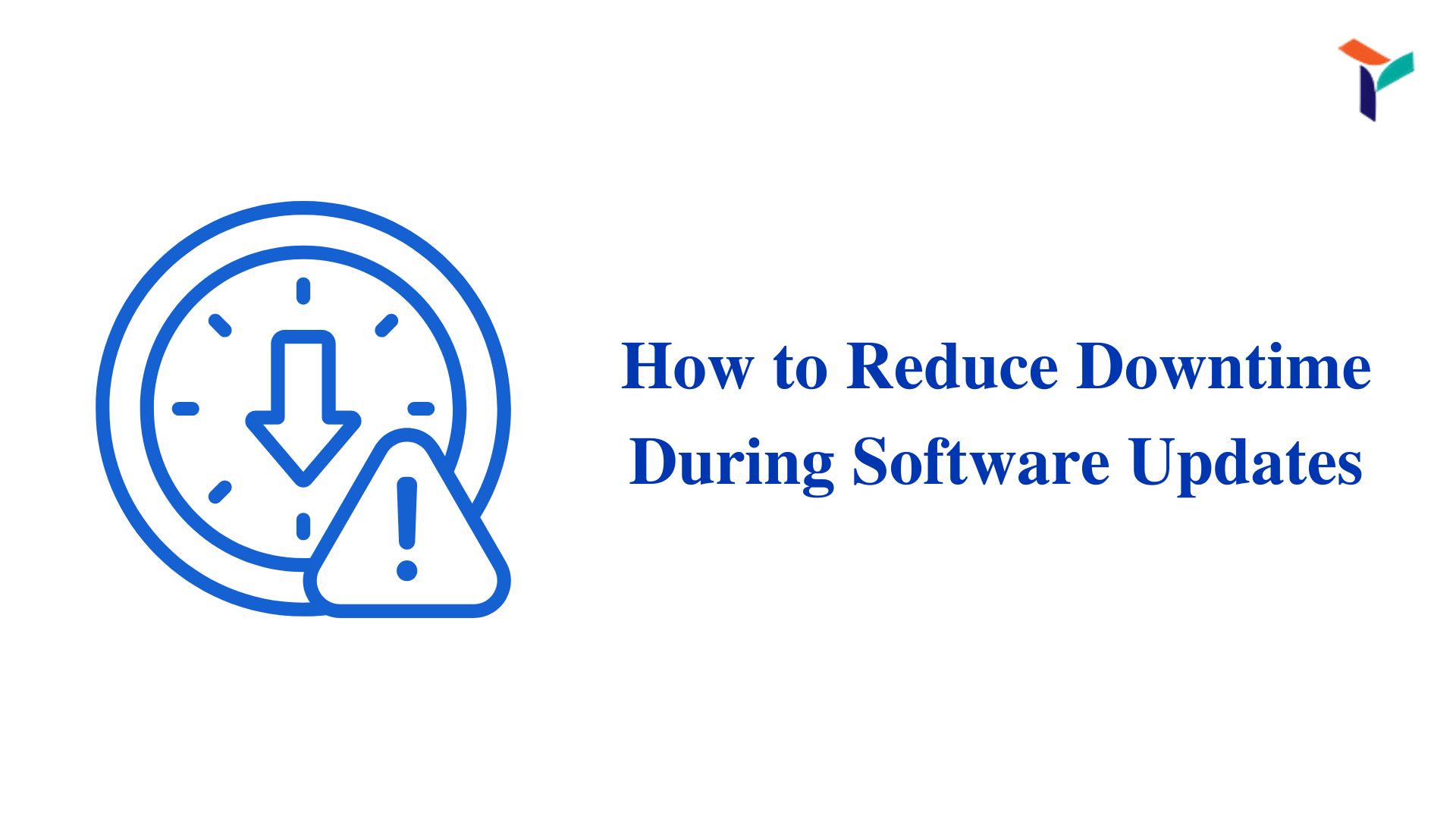If your team loses sleep every time a software update goes live, the real issue isn’t the update — it’s the way it’s being deployed. To reduce downtime during software updates, you need a deployment process that prioritizes uptime, predictability, and fast recovery.
Start by using proven strategies like blue-green deployment or canary releases that let you ship updates without disrupting users. Then, build a reliable rollback plan, automate your deployment through CI/CD, and monitor your system in real time. These are not just best practices — they’re how top engineering teams avoid disasters during updates.
Step-by-Step Strategy to Deploy Without Downtime
Here’s how to implement a deployment strategy that keeps your application live, stable, and error-free during updates.
Blue-Green Deployment Creates Instant Switchovers
Blue-green deployment means running two production environments. You deploy your update to the idle one, test it thoroughly, and switch user traffic when everything’s confirmed.
Why Blue-Green Works:
- Zero disruption: Users don’t experience the update process.
- Instant rollback: Switch back to the previous version if something breaks.
- Better QA: Test your changes in an identical live-like environment.
Canary Releases Limit Damage from Bad Updates
A canary release rolls out the update to a small subset of users first. If nothing breaks, you gradually expand.
What Canary Helps You Achieve:
- Early detection: Spot problems before full exposure.
- Live testing: Monitor how real users interact with the update.
- Controlled rollout: Reduce risk by limiting who sees the new version.
Always Build a Rollback Plan
Every update must have a backup plan. Without it, you risk scrambling under pressure when things go wrong.
What a Rollback Plan Should Include:
- Clear triggers: Know what signals a rollback.
- Automated snapshots: Save system state or backup databases before go-live.
- Recovery instructions: Team-wide steps on reverting versions instantly.
Optimize Infrastructure Before Deploying
Even with smart strategies, your tech stack can sabotage you if it’s not optimized for safe deployment.
Use CI/CD Pipelines to Automate and Test
A proper CI/CD pipeline ensures every change is tested, integrated, and deployed without manual intervention.
Benefits of CI/CD:
- Fast delivery: Code is automatically verified and shipped.
- Lower failure rate: Catch bugs before they hit production.
- Simpler rollbacks: Easier to trace issues to specific changes.
Control Feature Exposure with Toggles
Feature toggles let you separate deployment from release. You can push new code but control when it goes live.
Use Feature Toggles For:
- Gradual rollouts: Slowly activate features by region or user group.
- Safe testing: Hide features behind toggles during QA.
- Rapid response: Turn off buggy features instantly.
Load Balancing Keeps Traffic Moving
Use load balancers to route users away from services being updated. This prevents downtime even during large deployments.
How to Do It Right:
- Rotate traffic: Shift between active/idle servers.
- Reroute errors: Direct users away from failed nodes.
- Mix with deployment methods: Combine with blue-green or rolling updates.
Real-Time Monitoring Keeps You Ahead
Your monitoring setup is what tells you if the update worked — or went wrong.
Track Key Metrics Continuously
Monitor CPU, memory, response time, and error rates before, during, and after the update.
Monitoring Best Practices:
- Alert thresholds: Set alerts for failure signs.
- Visual dashboards: Track real-time system health.
- Integrated logging: Combine logs and metrics for better debugging.
Collect User Feedback After Launch
Sometimes, users spot issues that your team misses.
Make Feedback Easy to Give:
- In-app prompts: Ask users directly.
- Support monitoring: Watch for spikes in tickets or complaints.
- Quick forms: Let users report bugs in one click.
Mistakes That Cause Downtime
Even solid teams can fall into traps. These are common pitfalls that lead to unnecessary downtime.
Avoid These Mistakes:
- No rollback plan: You’re stuck when something breaks.
- Testing only locally: Misses real-world failures.
- Peak time releases: Updates during high traffic hours.
- No alerts configured: You only find out when users complain.
Conclusion
To reduce downtime during software updates, structure your deployment around resilience. Use techniques like blue-green deployments, canary releases, and rollback plans to protect your users. Automate through CI/CD pipelines, apply feature toggles to control rollout, and monitor your systems before and after updates.
Downtime is optional, not inevitable. With the right strategy, you can update confidently, protect your users, and scale without fear. Need expert help modernizing your release process? TRIOTECH SYSTEMS helps teams deploy faster and safer without disrupting business.




